Our current programme of digitisation, funded by the RBGE Foundation, seeks to digitise 420,000 specimens from our collections leading to 1 million records (approximately one third of the collection) being digitally available on our online catalogue by 2024.
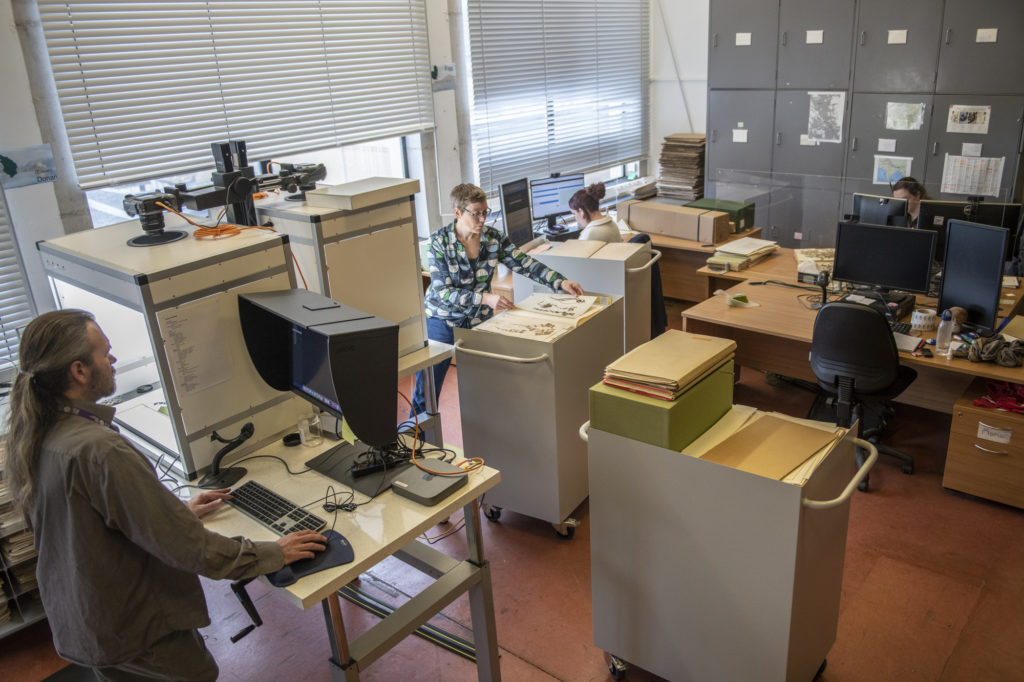
Whereas previous projects have focused on digitising a particular geographic region this current programme is working through the herbarium collection systematically i.e. groups of related plants. This approach compliments the organisation of the collection. Curators have used the evolutionary tree of flowering plants and transformed this into a linear sequence. This means it can be laid away into sequential cabinets, with the oldest branches in the first cabinets and the most recently evolved groups at the end of the collection.
Data recorded in-house for specimens is minimal allowing us to make specimen images available as quickly as possible.
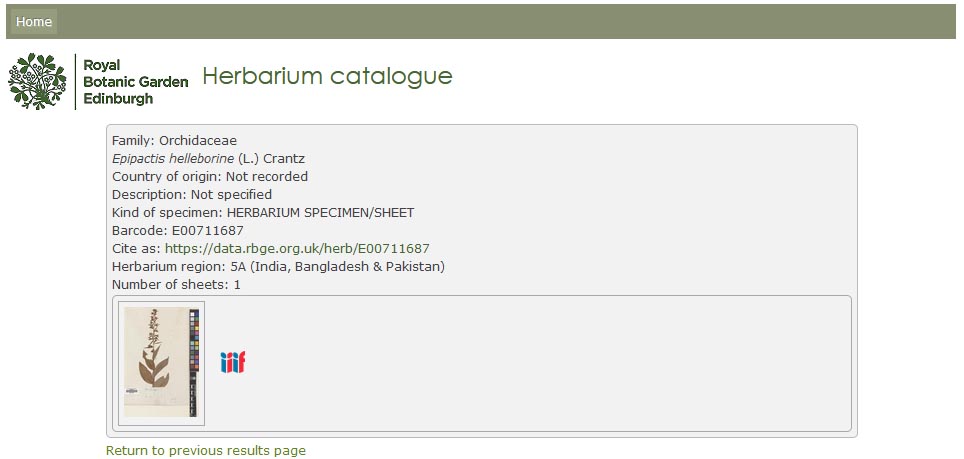
We then launch virtual expeditions on DigiVol, a crowdsourced digitisation platform developed and operated by the Australian Museum in collaboration with the Atlas of Living Australia. Volunteers use the platform to transcribe the collection label data from our specimen images. These data are critical to understand global species distributions, and how these change over time. In turn this informs conservation priorities.
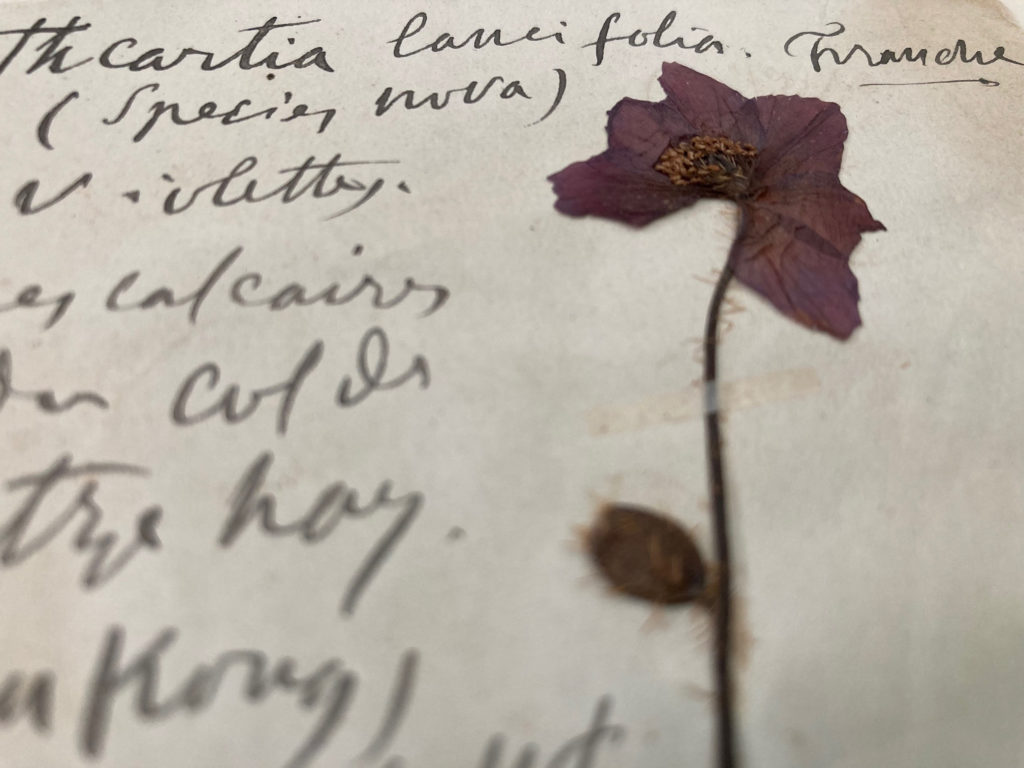
Courtney Kemnitz, one of our digitisers has worked through the order Ranunculales which contains the poppy family, Papaveraceae. The family can be found across the northern hemisphere in temperate and subtropical climates. Many species have striking brightly coloured petals to attract their pollinators.
Some of the species in the family are exceptionally beautiful and have been cultivated for display in gardens. These include: Meconopsis grandis, ‘the Himalayan blue poppy’, which bears striking sky blue flowers, and Lamprocapnos spectabilis, ‘Asian bleeding-heart’, with its distinct pendulous pink heart-shaped flowers with some of the petals forming a droplet below.
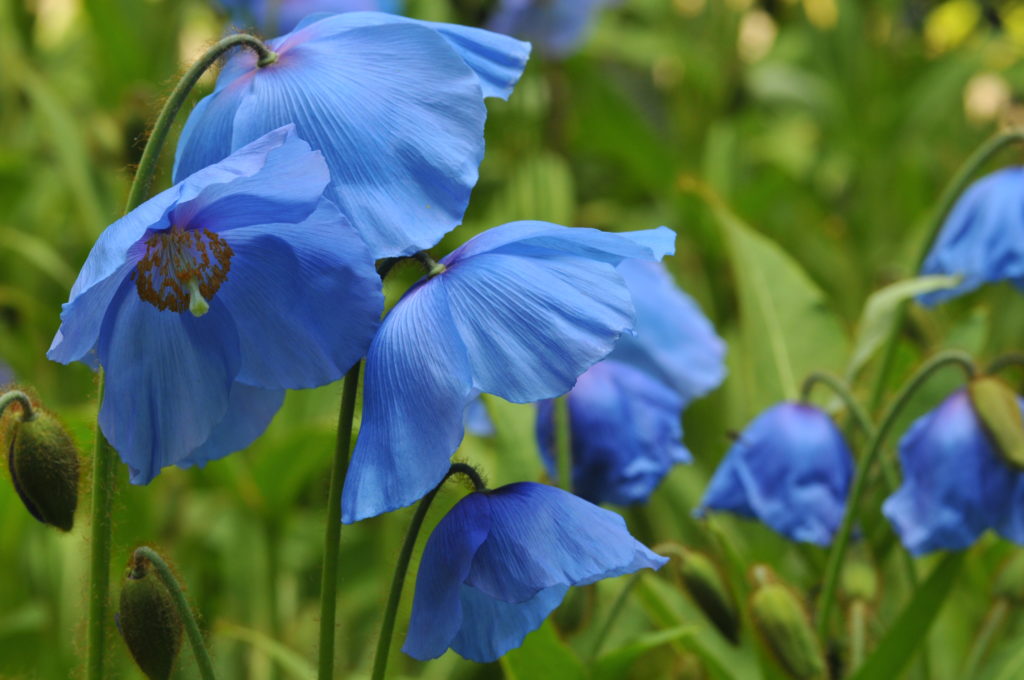
http://data.rbge.org.uk/living/19795073 Meconopsis ‘Slieve Donard’ By Robert Unwin 2008
Once this family had been digitised 49 Digivol volunteers then transcribed the collection. This is a massive milestone as RBGE holds 11,056 specimens from this family. This is currently the fourth largest digitally available collection of Papaveraceae according to the Global Biodiversity Information Facility.
What have we learnt from the transcribed data?
Global distribution
The transcription of collection labels allows us to see the global distribution of the collection:
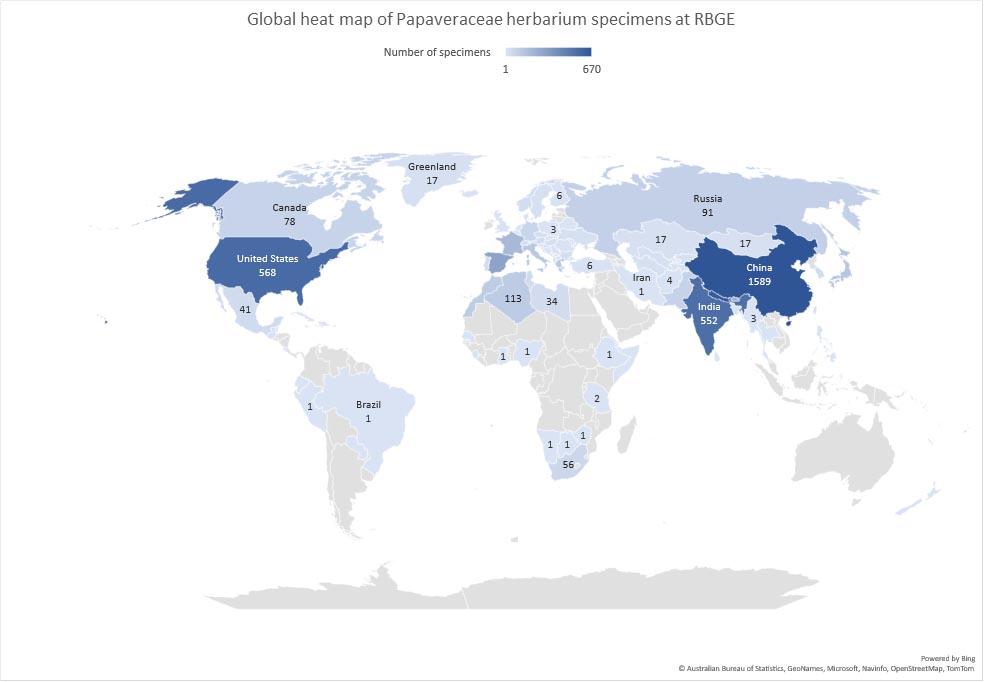
Our largest collections for the family are from China (1589 specimens) and Nepal (646 specimens) which makes sense as these represent geographical areas of focus for RBGE.
We are hugely grateful for the additional help and enthusiasm from Digivol volunteers Dr Iain Farrell and Patrick Herne who carried out quality assurance checks on the transcribed data from the specimens collected in China and Europe respectively. The validation of Chinese placenames was a team effort as Iain’s partner Ms Lik Suen, Lecturer in Modern Chinese Languages and Language Pedagogy at SOAS University of London, was a great source of help with the interpretation of placenames written on the specimens. The romanisation for Mandarin Chinese of placenames is frequently used on the specimen collection labels. The systems in use have changed over time creating quite a bit of detective work to ensure the locality data can be linked to the correct physical location.
In the 19th century the systems used were based two different dialects: Nanjing and Beijing dialects respectively. For most of the 20th century the most widely used was the Giles-Wade system which is based on the Beijing dialect. This has been superseded by Pinyin which was developed and approved by the Chinese Government in 1958. When carrying out research online it can be tricky to convert between the older systems and Pinyin.
Interpretation of the locality data helps us link specimens to higher level geography to see where collecting efforts have been concentrated in the collections. Looking at the distribution at province-level from the specimens collected in China you can see that most of the specimens were collected in Yunnan and Sichuan:
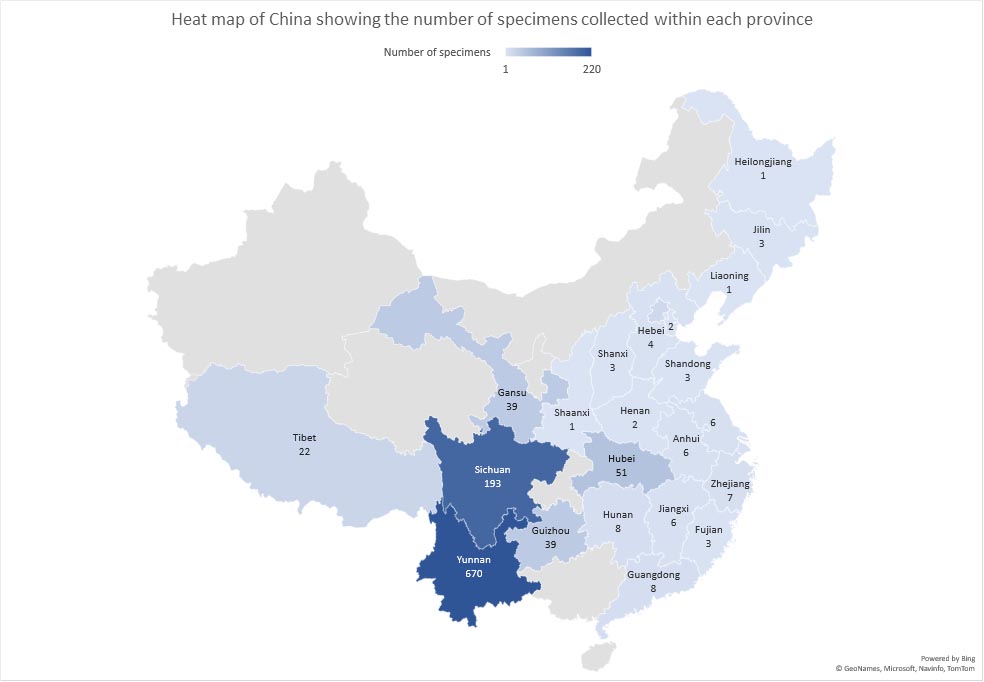
We can also answer who collected in these provinces. Over half of the Papaveraceae material from Yunnan was collected by George Forrest and Joseph Rock. This makes sense as George Forrest was first sent to on expedition to China by RBGE’s Regius Keeper Isaac Bayley Balfour in 1904. On this and subsequent trips he collected prolifically in NW Yunnan and Sichuan. Balfour and subsequent Regius Keepers at RBGE supplemented this collect with specimens from Joseph Rock, Heinrich Handel-Mazzetti, and the herbarium of Hector Léveillé.
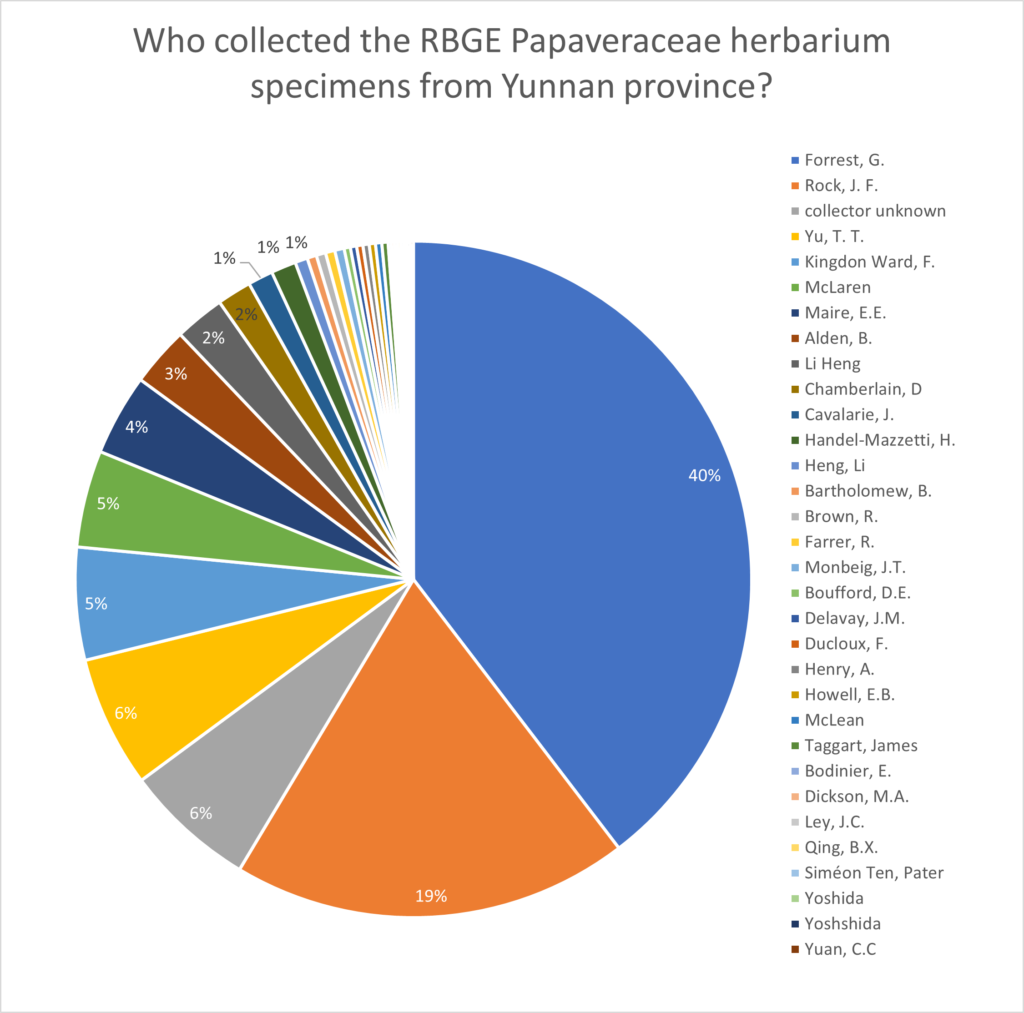
Transcription also allows for data enrichment
Some of the most useful specimens for research are those that can be pinpointed onto a map, zooming out to a global scale to see where the dots fall provides a picture of a species range. This requires latitude and longitude coordinates.
The Digivol volunteers are invited to transcribe geographical descriptions of the collection locality as well as latitude and longitude data when it is available on the collection label. This in turn tells us how many specimens currently have latitude and longitude data. Transcriptions from our Digivol expeditions indicate that to date 11% of Papaveraceae specimens have this level of data. For the 89% specimens without coordinates, the transcription of the geographical descriptions found on the collection labels can help researchers identify the latitude and longitude data.
Thank you to all who made this possible
Digitising the Papaveraceae specimens was a huge undertaking and would not have been possible without funding from the RBGE Foundation and the dedication and enthusiasm from both staff and volunteers. Your contributions have made the collection data more accessible for global plant research.
Want to join in?
You can take part in our ongoing effort to digitise the collection. In our current series of virtual Digivol expeditions we are exploring the Lilliaceae family. Sign up as a volunteer at https://volunteer.ala.org.au and search for Royal Botanic Garden Edinburgh.
